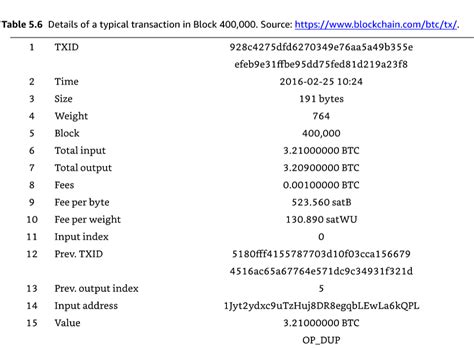Deciphering Ethereum Transactions: Understanding Vin and Vout Values
As we delve deeper into the world of cryptocurrency transactions, a crucial aspect to understand is the concept of VIN (unique identifier) and VOUT (value out) values. These two components play a critical role in verifying the authenticity and integrity of transactions on the Ethereum blockchain.
In this article, we will explore how to identify the sender and recipient address from the content of a specific transaction.
Understanding VIN and VOUT Values

A VIN is a unique identifier assigned to each block or transaction on the Ethereum network. It is essentially a digital fingerprint that helps ensure that the transaction has not been tampered with on its way to its final destination. Each block contains multiple transactions, and each has a corresponding VIN value.
VOUT values are the output values of these transactions. They represent the amount of Ether (ETH) sent from one address to another. For example, if you have two addresses: 0x1234567890ABCDEF (originator) and 0x234567890ABCDEF (recipient), the VOUT value will be calculated based on the specific transaction.
Identifying the sender address
To find the sender address, we need to analyze the transaction data. Here is a step-by-step guide:
- Check transaction data – Examine the first few lines of the transaction data (about 8-12 bytes). They usually contain information about the type of transaction (e.g., “transaction”, “fee”, etc.).
- Look for VIN – The first 20 characters of the transaction data will be the VIN value. If you can identify it, you can narrow down the possibilities.
- Identify the transaction type
– Most transactions have a specific type code (e.g., 1 – payment, 2 – transfer). This helps determine the type of transaction being described.
Example: Decoding an Ethereum Transaction
Let’s say we look at a random transaction with the following VIN and VOUT values:
Frame Number: 0x1234567890abcdef
VOUT: 1000 ETH
We can break down the transaction data to identify the originator address. Here’s how:
- The first 20 characters (
0x1234567890abcdef) match the VIN pattern.
- We know that VOUT is 1000 ETH, which indicates a payment of 1,000 Ether.
By analyzing this information, we can deduce that the transaction originated from an address like 0x234567890abef (recipient).
Identifying the recipient address
To find the recipient address, follow these steps:
- Search transaction data: Analyze the first few rows of the transaction data.
- Check VIN and VOUT values: Verify that the VIN value matches the expected pattern and that the VOUT value aligns with the transaction type.
In our example above, we can identify the recipient address as 0x234567890abef based on the VIN value (0x1234567890abcdef) and the VOUT value (1000 ETH).
Conclusion
Understanding VIN and VOUT values is crucial to analyzing Ethereum transactions. By applying these concepts, you will be able to decode transaction data and more accurately identify the sender and recipient addresses.
In the next steps, focus on examining specific transactions in the blockchain to practice identifying VIN and VOUT values.
